BELGRADE — Where Great Meadow Stream feeds into the North Bay of Great Pond, the reeds part, appearing like an inviting channel — but this is not the case.
The reeds have parted because they and other aquatic plant life have been choked out by variable leaf milfoil.
The invasive milfoil, native to the southern part of the U.S., grows so heavily here that it reaches the surface of the water, collecting pollen and debris. It has become a monoculture — it is all that grows.
To an untrained eye, it may appear to be an easy spot to paddle or to throw a line. But paddles, propellers and even fishing hooks would break the variable leaf milfoil into fragments.
That is just what this invasive, consuming plant wants — its broken plant pieces can grow new plants, spreading and further establishing the infestation.
Left unchecked, the variable leaf milfoil has potential to turn a clear Maine lake into muck, shaking the local ecology and economy.
7 Lakes Alliance is determined that this will not happen to Great Pond.
“We are at risk of reducing biodiversity, which will have trickle down effects on wildlife, fishing, property values and the economy from the fishing industry and recreation,” said Sharon Mann, the milfoil removal manager for the alliance.
“Great Pond is one of the most visited lakes in Maine,” she said, increasing the speed of the 7 Lakes skiff as she departed the channel around Belgrade Village. “If this thing spreads out of Great Meadow Stream, everyone’s property values are going to go down; people are not going to want to visit.”

Lauren Pickford holds up a fragment of variable leaf milfoil June 28 that she scooped up with a net as Sharon Mann, center, works in North Bay of Great Pond in Belgrade. Kennebec Journal photo by Joe Phelan
Variable leaf milfoil is very adaptive, growing up to an inch per day in ideal conditions in water up to 20 feet deep. It can reproduce through fragmentation where pieces of that plant that break off can take root and new plants can grow.
“Boats, even paddling around, can accidentally break off a piece of the plant,” said Mann, “and then the wake, currents and the wind will push it into streams and coves, and that is when it will take root and develop.”
And climate change is working in favor of variable leaf milfoil.
“More frequent storms, earlier ice outs, longer growing seasons are very favorable to the growth of invasives,” explained 7 Lakes Alliance president and CEO, Laura Rose Day. “As it gets warmer, more lakes are going to be hospitable to milfoil.”
She said climate change also affects human behavior, increasing the opportunity for variable milfoil plant matter to enter the water. Thousands of boats visit Great Pond outside of the summer season between Memorial Day and Labor Day.
“We have already had hitchhiking matter as of June 28,” Rose Day said.
The variable leaf milfoil plant matter was discovered by a courtesy boat inspector before the boat entered the lake.
“We had a young person who was taking their job seriously and protected it from happening,” Day said.
Along with the courtesy boat inspections, 7 Lakes Alliance also runs the Adopt-a-Shoreline program where it trains volunteers to recognize invasive plant and animal identification, Mann said. These volunteers are responsible for surveying designated areas of shoreline. Right now around 70% of the Great Pond shoreline has been “adopted.”
“Great Pond has lots of shoreline that it can spread to,” said Rose Day during the 15-minute boat ride from the alliance headquarters to the Great Meadow Stream. “That it has not spread is amazing.”
The alliance also performs surveys of the entire shoreline of the lake at least once annually by swimming, kayaking or using a light boat. The survey determines where it might be taking hold and also maps where it most likely could take root.
Though the infestation at Great Meadow Stream is the biggest infestation, variable leaf milfoil plants can also be found scattered in North Bay, Robbins Mill Stream and Rome Trout Brook.
At the mouth of Great Meadow Stream, where the monoculture of variable leaf milfoil exists, 7 Lakes Alliance’s efforts to contain the plant have been successful.
Behind a large net that prevents variable milfoil fragments from leaking into Great Pond, dive crews spend four, 10-hour days on the water manually removing milfoil.
“It is intensive work,” said Rose Day over the sound of the air compressor, which supplied air to Mann as she dived.
A kayaker or someone in a small boat will also collect floating fragments and make sure none stick to the boat and other equipment.

Sharon Mann swims in North Bay of Great Pond collecting variable leaf milfoil on June 28 in Belgrade. The yellow air line went to a compressor on the boat that was sending her air. Divers stay in for several hours at a time during four 10-hour shifts each week, pulling up the invasive plant. Kennebec Journal photo by Joe Phelan
The divers, watched by a spotter, use a combination of hand pulling and diver assisted suction harvester (DASH) equipment. The hand pulling is more appropriate for pulling scattered plants while the DASH technique is useful for pulling plants in the monoculture and established infestations.
Both techniques require the diver to pull the plants by hand. In simple hand pulling, the diver feeds the plants into a handheld net. With the DASH method, the diver hand-pulls the plant and feeds it into a hose that vacuums the plants and discharges them into a bag.
This summer through the end of September, the 7 Lakes Alliance will have the help from New England Milfoil, which it has hired to pull plants.
“There are not enough resources to do the job,” said Rose Day.
In just a few minutes of hand pulling, Mann has filled a net with variable leaf milfoil — and the water around her is murky.
That murky water creates a challenge for divers to see the plants. It becomes murky as the plants are pulled, loosening sediment on the lake bottom, which divers have to wait for to settle. The water can also become murky following torrential rains that muddy the water.
Divers also have the challenge of identifying that they are pulling variable leaf milfoil — there are six species of milfoil native to Maine, along with many other aquatic plants.
“These efforts honestly that have kept it from spreading to other places because this amount of fragments is crazy,” said Mann, as she handed a net bag full of variable leaf milfoil. “You cannot imagine how easy it could spread across the lake, and it really has not.”
But without complete eradication, some might ask if these efforts should be considered a success.
“By the time our efforts started in 2012, the infestation was already well established,” said Mann. “The only success stories of 100% eradication are when they catch it super early.
“We need to continually invest in this even if it is not like one day we will win a fight and it will be dead forever.”

Variable leaf milfoil growing in North Bay of Great Pond on June 28 in Belgrade. Kennebec Journal photo by Joe Phelan
The invasive plant was discovered in Great Meadow Stream in 2009.
Rose Day said that the Maine Department of Environmental Protection considers efforts successful if the variable leaf milfoil does not spread.
“We would like to do better,” she said. “We would love to eradicate it.”
Mann said that in order to have continued success and be able to improve on their efforts, the alliance is collecting more data and learning from the science about the plants.
Near the monoculture on the mouth of Great Meadow Stream, Mann has set up two exclosures, which look like white, boxy enclosures sticking out of the water. Those exclosures will answer whether the variable leaf milfoil is coming back by the roots, fragments, seeds or a combination of those.
Plants are removed from the enclosure, therefore excluding anything from emigrating and immigrating into it so that fragmentation can be ruled out, Mann explained. If something grows back, it’s growing back by roots and seeds.
“So far there is no evidence in Maine to indicate that the plants are reproducing sexually by seed because no one is looking into it,” said Mann. “We are going to look into it.”
The infestation on Great Pond and Great Meadow Stream is not a candidate for herbicide treatment, as is being done on Cobbossee Lake in Winthrop.
The type of milfoil in Cobbossee Lake is Eurasian water milfoil, which is affected by the herbicide unlike variable leaf milfoil, which is in Great Pond. The herbicide also only works for new infestations, not one as well-established as the one in Great Pond.
“The Department of Environmental Protection does not currently have an herbicide that will treat variable milfoil,” said Mann.
How the invasive milfoil species spread into Maine lakes is not known certainly, but it can come from a boater who had used their craft in an infested lake.
The DEP recommends boaters clean off any organic debris from their watercraft, trailer, motor, and other equipment. That material should be discarded where it cannot wash back into the water.
Boaters should also drain water from the craft — including the hull, engine, bilges and live wells — away from the water, and dry anything that comes into contact with the water in the sun. The DEP suggests five days of drying time if the boater is unable to access hot, high pressure water to rinse with.
The DEP and Inland Fisheries & Wildlife have placed a surface use restriction on motorized watercrafts in a portion of North Bay where Great Meadow Stream flows into Great Pond. The restricted area also includes Great Meadow Stream.
The alliance, a nonprofit, is funded by the DEP, the towns it serves, private donations and fundraising efforts in partnership with Belgrade Lakes Association.
The DEP has awarded the group a $28,572 grant this year for plant removal work.
“There are places in New Hampshire and Massachusetts where they have to mow the milfoil down so people can leave their docks,” said Rose Day. “They bring out the harvesting machines purely so they can get from one place to another.
“We will try to keep that from ever happening.”
Send questions/comments to the editors.


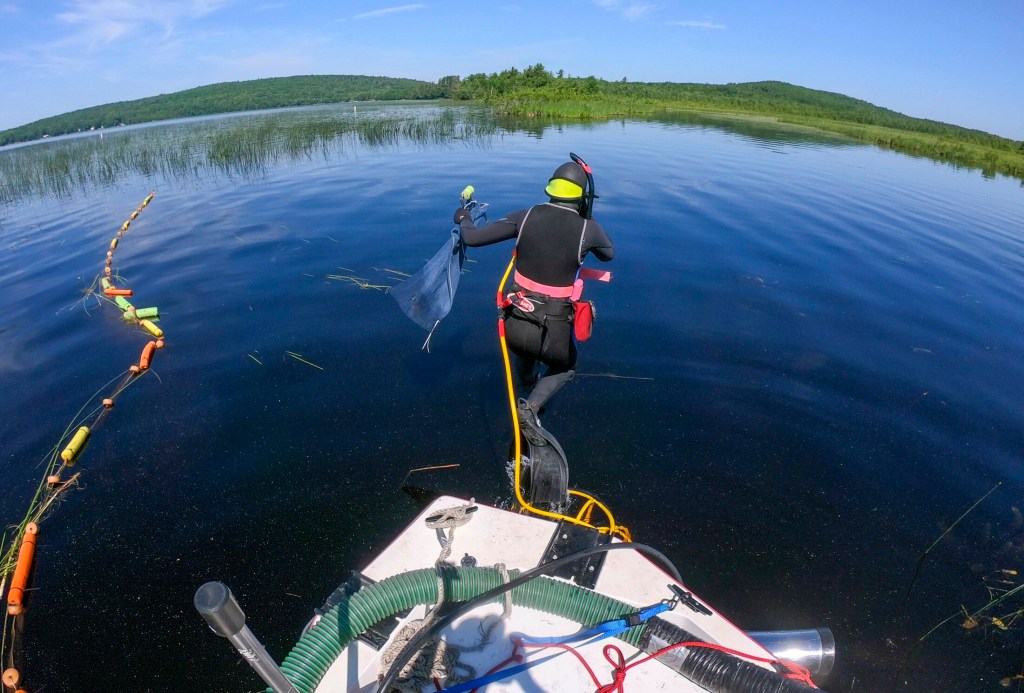
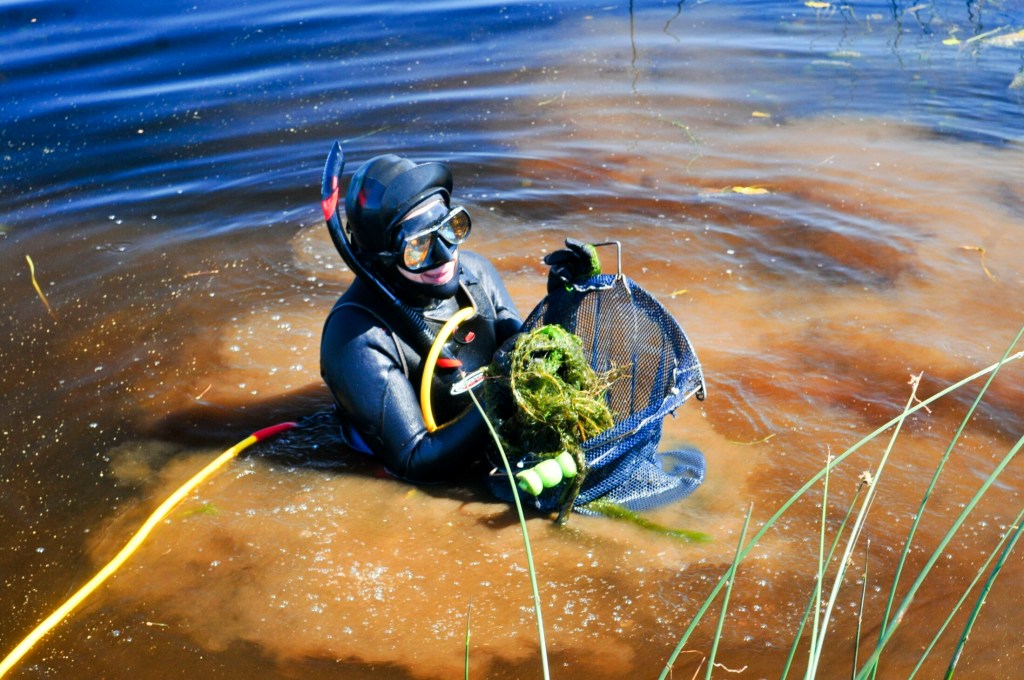
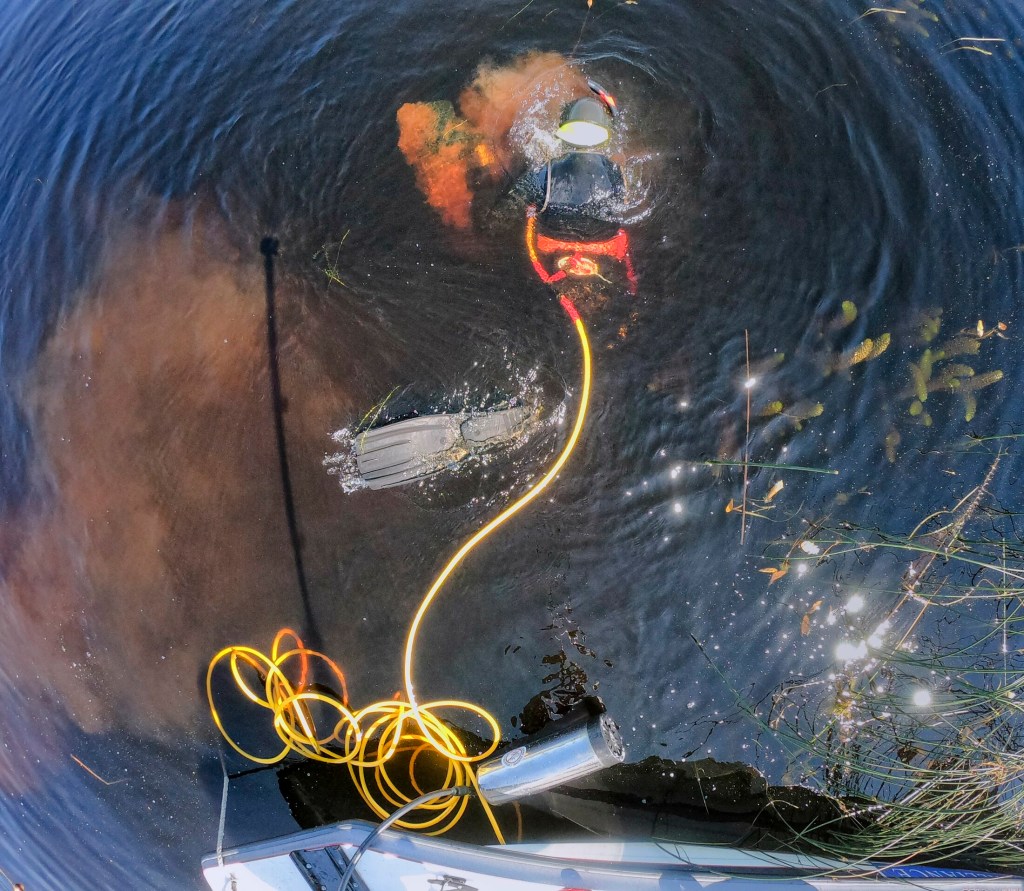
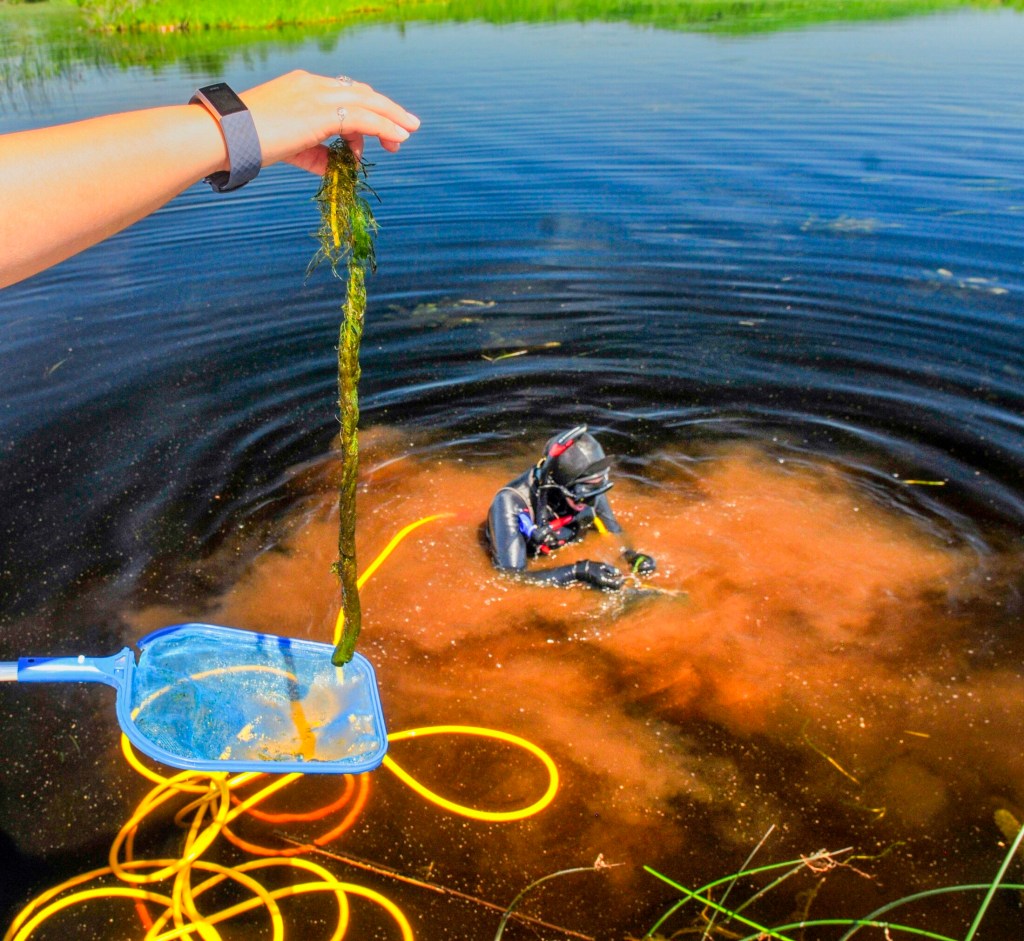
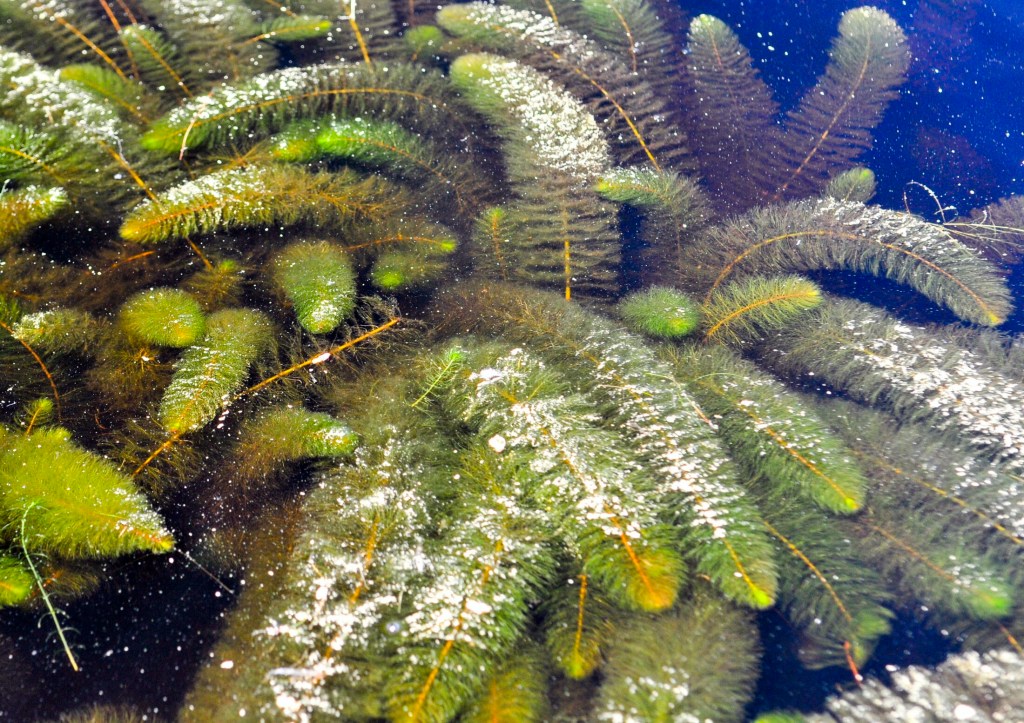

Success. Please wait for the page to reload. If the page does not reload within 5 seconds, please refresh the page.
Enter your email and password to access comments.
Hi, to comment on stories you must . This profile is in addition to your subscription and website login.
Already have a commenting profile? .
Invalid username/password.
Please check your email to confirm and complete your registration.
Only subscribers are eligible to post comments. Please subscribe or login first for digital access. Here’s why.
Use the form below to reset your password. When you've submitted your account email, we will send an email with a reset code.